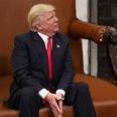Rehabilitation fund ups effort to reach disabled
-
Recently Browsing 0 members
- No registered users viewing this page.
-
Topics
-
Popular Contributors
-
Latest posts...
-
32
Trump has signed 124 orders in less than 100 days. Scholars warn this is a constitutional cr
Then I suggest you stop infecting this forum with your lies and distorted posts. -
32
Trump has signed 124 orders in less than 100 days. Scholars warn this is a constitutional cr
Oh look he has also signed MORE than any other president in the last 60 years as well. -
28
Crime Taxi Driver Blocks Ambulance, Leading to Patient’s Death in Patong
Thailand creates a culture. Support this culture. And then appears offended at the result of this culture. Very simply, laws not enforced are the same as no law at all. Wrote that before. This taxi driver will get a slap on the wrist, while complaining that he had a reason.... -
174
Russia Dismisses Trump’s Ukraine Peace Plan Offers 3 Day Ceasefire
This whole betrayal and Putin's puppet rubbish is so far from reality yet those of you afflicted with the syndrome hold onto it. Rationale my friends has left you behind. -
6
Trump's decisions will cost lives as he walks away from responsibility
Oh look, another topic for left-wing crybabies to blub about ...... zzzzzzzzzzzzz -
49
Florida man says "I run the country and the world"
They tried to blow his head off. It's a dangerous job and doesn't pay well for a billionaire. Let him make a few extra bucks. He likes money, who doesn't?
-
-
Popular in The Pub
-

.thumb.jpg.3ee24d9400fb02605ea21bc13b1bf901.jpg)


.thumb.jpeg.d2d19a66404642fd9ff62d6262fd153e.jpeg)





Recommended Posts
Create an account or sign in to comment
You need to be a member in order to leave a comment
Create an account
Sign up for a new account in our community. It's easy!
Register a new accountSign in
Already have an account? Sign in here.
Sign In Now